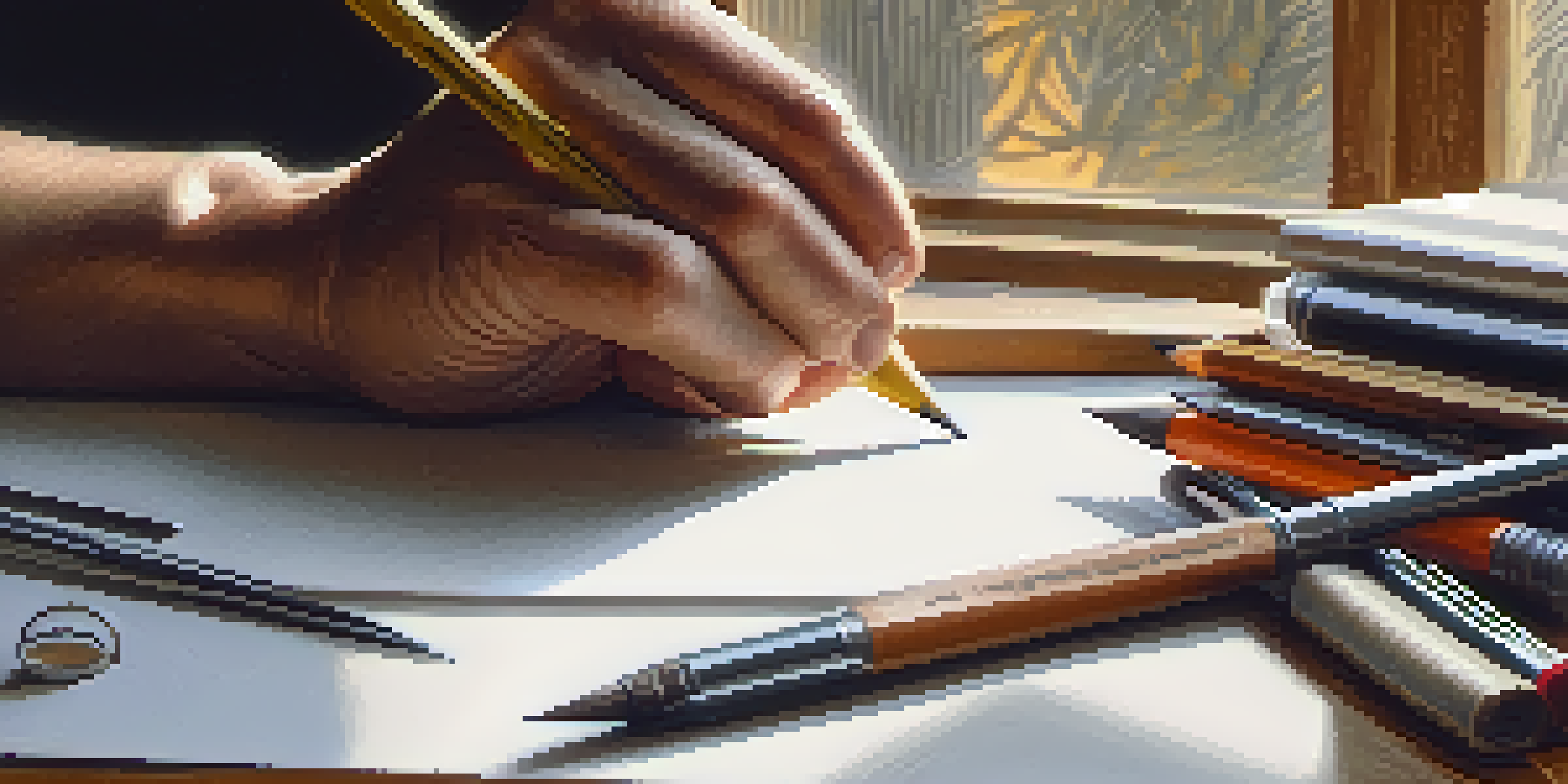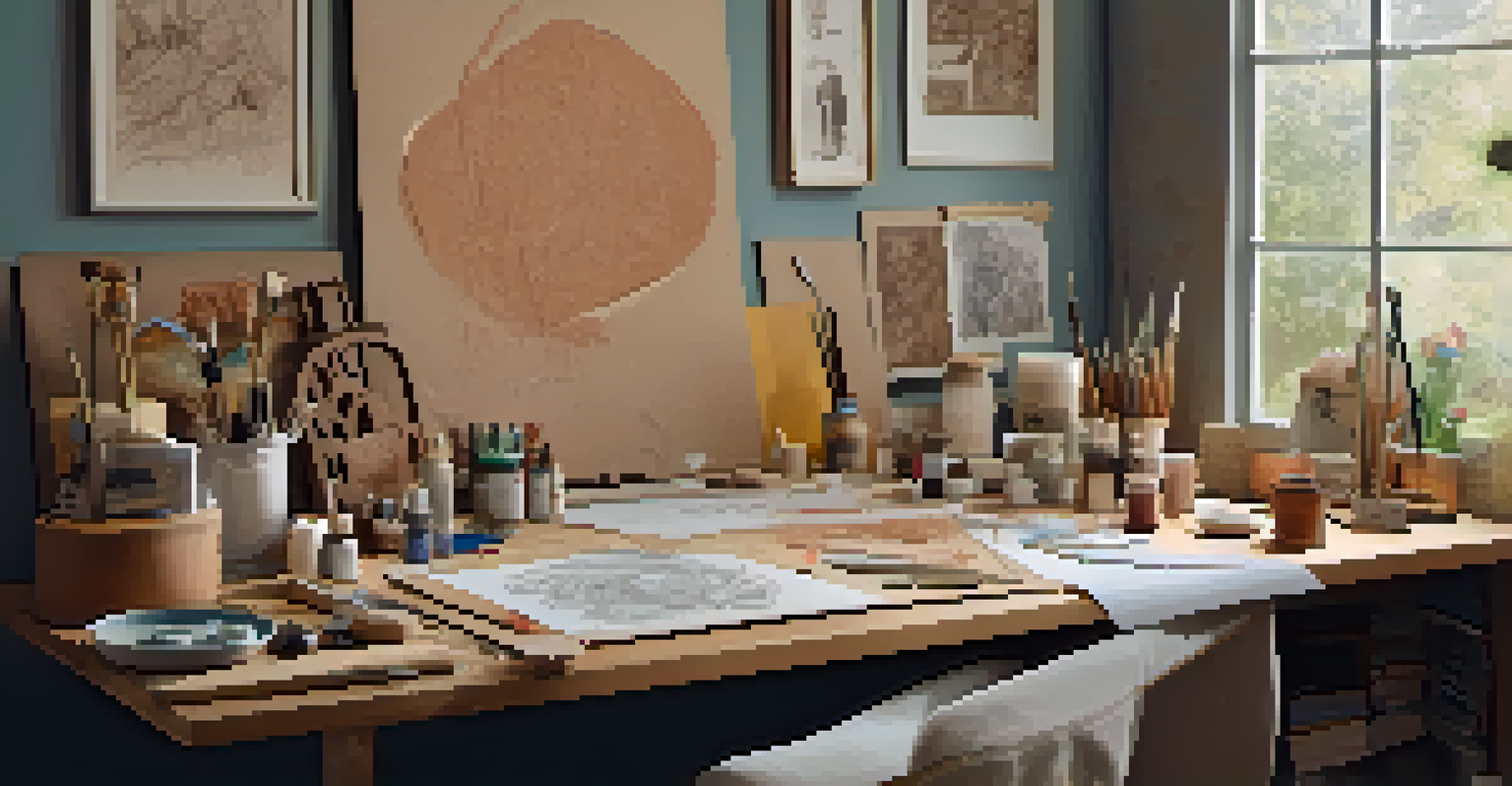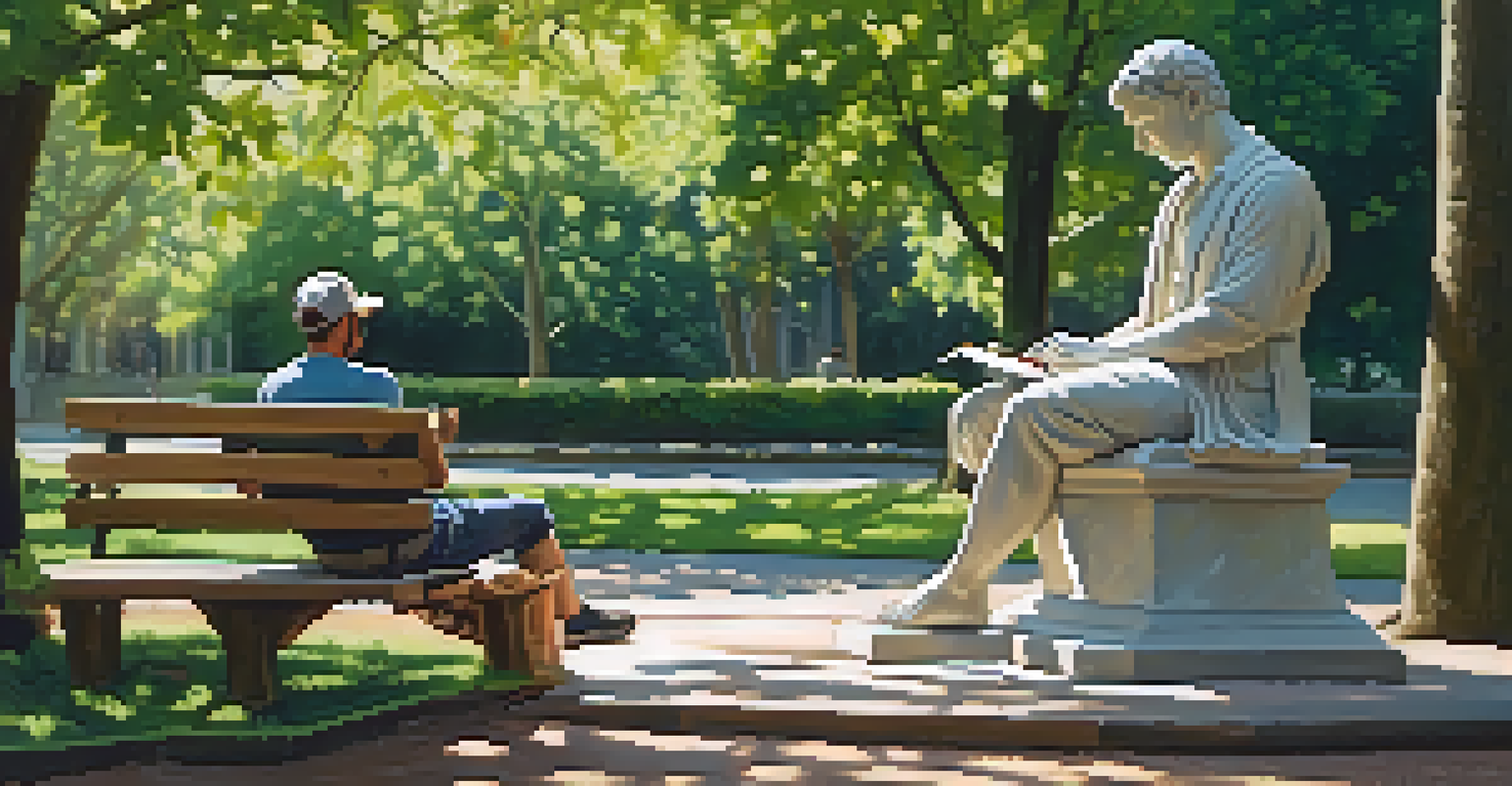The Importance of Sketching Before Sculpting: A Guide

Understanding the Role of Sketching in Sculpting
Sketching serves as a foundational step in the sculpting process. It allows artists to visualize their ideas before committing to the more permanent medium of sculpture. By translating thoughts into two-dimensional sketches, sculptors can explore various forms and compositions without the pressure of working in three dimensions.
Every artist was first an amateur.
Moreover, sketching acts as a blueprint for the sculptor, helping to clarify details such as proportions and perspectives. This planning stage can prevent costly mistakes later on, saving both time and materials. Just like an architect wouldn’t start building without a plan, sculptors benefit immensely from a well-thought-out sketch.
In essence, sketching serves not only as a practical tool but also as a creative outlet. It gives artists the freedom to experiment with ideas, encouraging spontaneity and innovation that might not emerge during the sculpting phase.
Sketching as a Tool for Concept Development
When starting a sculpting project, sketching is essential for developing concepts. It allows artists to brainstorm and refine their ideas, capturing the essence of what they want to create. This process can spark new insights and lead to unexpected creative directions.

For instance, an artist might begin with a rough sketch of a figure, only to discover through doodling that an entirely different pose or expression works better. This flexibility is crucial in the early stages, where ideas are still malleable. The act of sketching can also help artists identify the strengths and weaknesses of their concepts.
Sketching Enhances Creative Freedom
Sketching allows artists to explore and refine their ideas creatively, leading to innovative solutions and stronger final pieces.
Ultimately, sketching encourages a dialogue with the medium before the sculptor begins the physical work. This proactive approach can lead to a more cohesive and well-thought-out final piece.
Enhancing Proportions and Spatial Awareness
One of the key advantages of sketching is that it enhances an artist's understanding of proportions. By practicing sketching, sculptors can learn to accurately depict the relationships between different elements in their work. This skill is invaluable when transitioning to sculpting, where maintaining proper proportions is vital.
The sketch is not a work of art; it is a study for a work of art.
Moreover, sketching allows artists to experiment with spatial arrangements and perspectives. They can easily adjust elements in their sketches, ensuring that the final sculpture will convey the intended depth and dimension. This ability to visualize space on paper translates effectively into three-dimensional work.
In short, the practice of sketching sharpens an artist's eye for detail, preparing them for the intricate demands of sculpting.
Facilitating Problem-Solving in the Sculpting Process
Every sculptor faces challenges along the way, whether it’s achieving a desired shape or addressing structural issues. Sketching can be a powerful problem-solving tool during these moments. By stepping back and sketching potential solutions, artists can visualize adjustments before making any changes to their sculpture.
For example, if a sculptor struggles with a particular feature, sketching alternative approaches can illuminate a path forward. This process allows for experimentation without the commitment of altering the actual sculpture. It’s a way to trial different ideas quickly and effectively.
Improves Proportions and Spatial Skills
Through sketching, sculptors gain a better understanding of proportions and spatial relationships, which is crucial for successful sculpting.
Through this iterative process, sketching not only aids in finding solutions but also enhances the overall quality of the final piece. It fosters a mindset of experimentation and adaptability.
Building Confidence and Personal Style Through Sketching
Sketching is also a fantastic way for artists to build confidence in their abilities. Regular practice allows sculptors to develop their unique styles and techniques. Over time, artists can find their voice, discovering what resonates with them and their audience.
As they sketch, artists can explore various themes and subjects, gradually honing in on what inspires them most. This exploration fosters a sense of ownership over their work, empowering them to make bold choices when it comes to sculpting. Just like a writer finds their narrative voice through drafts, sculptors refine their artistic voice through sketches.
Ultimately, sketching nurtures a lifelong journey of growth and discovery, encouraging artists to embrace their individuality and creativity.
The Connection Between Sketching and Final Sculpting Techniques
The techniques used in sketching can greatly influence the sculpting process. For instance, the way an artist uses lines and shading in their sketches can translate into how they approach texturing and detailing in their sculptures. This connection between the two mediums creates a cohesive artistic language.
Additionally, sketching can help sculptors plan out their tools and methods for the actual sculpting. By visualizing the textures and forms they want to achieve in their sketches, artists can select the appropriate tools and materials upfront. This foresight can streamline the sculpting process.
Facilitates Collaboration and Feedback
Sketching serves as a visual tool for incorporating feedback, enhancing collaboration and communication among artists.
In effect, sketching not only serves as a preparatory step but also enriches the sculpting experience, fostering a deeper understanding of the artistic process.
Incorporating Feedback: The Role of Sketching in Collaboration
For artists working in collaboration or receiving critiques, sketching becomes an invaluable tool for incorporating feedback. When peers or mentors provide insights, artists can quickly sketch revisions or new ideas based on that input. This flexibility allows for a dynamic exchange of ideas and enhances the collaborative process.
Sketching makes it easier to communicate concepts visually, bridging any gaps in understanding. Instead of relying solely on verbal descriptions, artists can illustrate their thoughts, making it simpler for others to grasp their vision. This visual dialogue can lead to more meaningful collaboration and improved outcomes.

Ultimately, sketching fosters an environment where feedback is welcomed and integrated, encouraging growth and innovation.
Conclusion: Embracing Sketching as a Vital Step in Sculpting
In conclusion, sketching is not just a preliminary step in the sculpting process; it’s an essential practice that enriches an artist's journey. From concept development to problem-solving, sketching enhances creativity and fosters a deeper understanding of form and space.
By taking the time to sketch, sculptors can save themselves from potential pitfalls and ensure that their final pieces truly reflect their artistic vision. This practice encourages exploration, experimentation, and the development of a unique style.
So, whether you're a seasoned sculptor or just starting out, embrace sketching as a vital part of your artistic process. You may find that it transforms not only your sculptures but your entire approach to art.